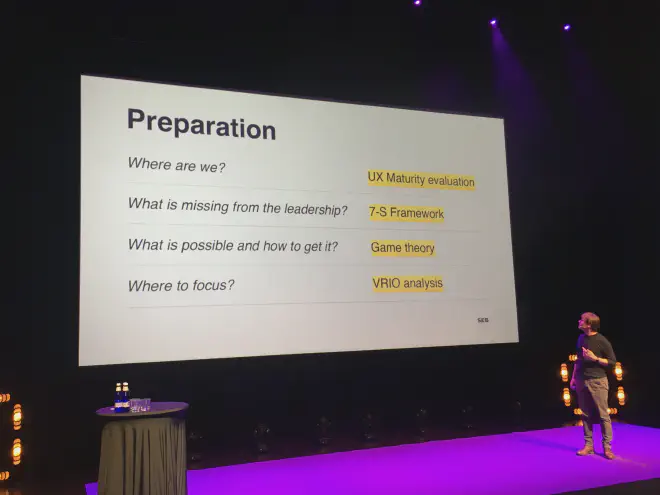Refresh Conference 2023

I inherited the UX team 18 months ago and have been on a journey to revamp our strategies and practices.
The key was implementing various strategic frameworks and tools.
Nielsen Norman Group’s UX Maturity Evaluation was crucial in measuring the UX team’s and organization’s maturity, setting the stage for further development.
McKinsey’s 7-S Framework is a reflective tool that helped me identify gaps in leadership and team coordination. This was an immediate feedback and guide for me.
Game Theory gave insights into decision-making and strategic interactions within the organization.
VRIO Analysis helped me to assess the unique value and competitive advantage the UX team brings to the organization. It was driving focus and prioritization.
Overcoming imposter syndrome and the temptation to continuously seek new frameworks were part of my learning curve. But these tools not only streamlined our processes but also enabled a shared language and understanding within the team.
Our strategy circles around clear objectives, measurable results, and actionable plans, all rooted in a vision to nurture a customer-centric culture in the organization. This means educating other teams in service design, ensuring transparency of the UX team’s work, developing competencies, and establishing metrics.
Looking back, I once again realize the importance of process. Returning to foundational principles and rethinking our strategies through frameworks allowed us to align our actions.